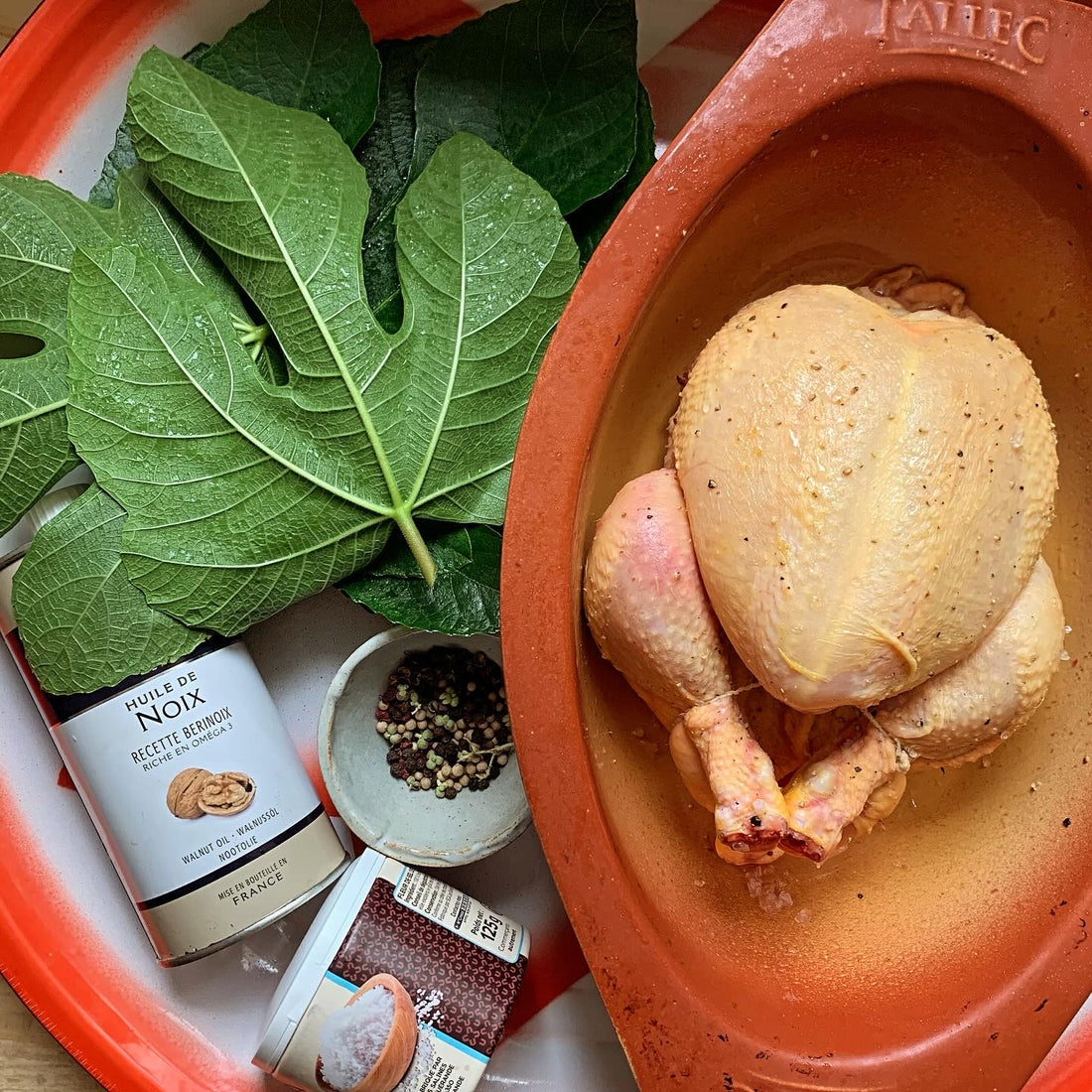
A culinary affair - Bai Mu Dan & fig leaves wrapped chicken
Share
June is the month when fig trees produce not only delicious fruits but also remarkable leaves. These leaves are akin to gold in the kitchen and are utilized in cuisines for their aromatic and unique culinary qualities spanning from the Mediterranean region to the Middle East and even as far as India. Having employed them multiple times in the past, I found that while tasting our spring 2024 Bai Mu Dan King white tea from Fuding, its flowery profile harmonized with the distinctive fragrance of fig leaves.
These leaves are employed in various ways, but one of my favorites is using them to wrap a whole chicken and gently roast it. They infuse the meat with a delightful flavor, hinting at coconut, while retaining moisture, resulting in tender and juicy meat and creating a flavorful jus.
After sampling this year's new Bai Mu Dan King white tea from Fuding province, I paired its flowery fragrance and robust tea taste with the subtle sweetness of the fig leaves to balance the rich and flavorful yellow chicken meat.

I opted for a yellow chicken from the Perigord region due to its smaller size (1.4kg), perfect for a meal for five people, and its tendency to cook faster than white chicken. For this meal, Seb requested one of his favorites: young potatoes cooked in beef suet and a green salad, both freshly picked from our garden.
Preparing this chicken is quite simple. It begins with seasoning; for me, a simple touch of salt and pepper suffices, though one can let their imagination run wild with spices. After seasoning, I wrap it in fig leaves, about ten young leaves being sufficient. Once tightly wrapped, I add a layer of parchment paper.

The cooking process begins directly in the cold oven; no preheating necessary. I simply put the chicken in the oven and set the thermostat to 180c ( fahrenheit) for 01h45mn. And that is it!
As expected, this Bai Mu Dan pairs well with the chicken. The tea's taste counterbalances the richness of the fatty meat, while its flowery fragrance complements the sweet and delicate coconut thread that fig leaves weave in the mouth.
It is, yet, another wonderful demonstration of how Chinese tea can be versatile and enhance the culinary experience, regardless of its origin.

